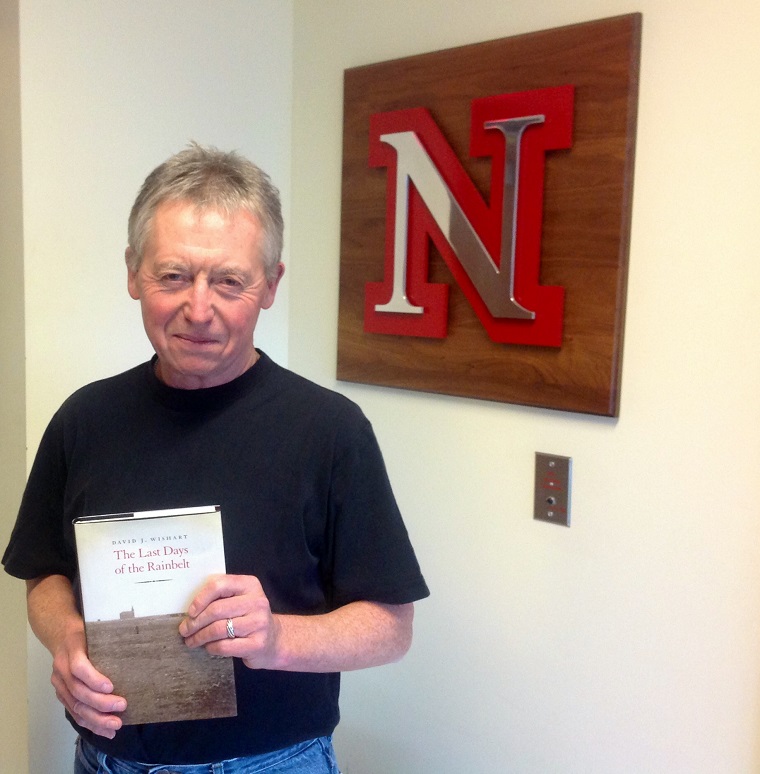
In a time before proper precipitation records and weather data, it was easy to convince people that a place was not what it seemed.
That's the underlying narrative of David Wishart's new book, "The Last Days of the Rainbelt," which examines the rapid rise and decline of the settlement of the western Great Plains during the late 19th century.
"The book is about a delusion – the myth that the late 19th century settlers on the western High Plains would produce their own rain by plowing up the earth and planting trees, converting a semi-arid region into a humid one simply by living their lives," said Wishart, professor of geography.
That myth was persuasive in a time that lacked reliable rainfall records and was promoted by everyone from scholars, state agencies and railroad companies. Settlers were told that rainfall would increase as farmers planted trees, which would still the hot winds and reduce evaporation, while at the same time returning moisture to the atmosphere through transpiration – supposedly causing saturation and, ultimately, more rain.
Thousands flocked to western Kansas, southwestern Nebraska and eastern Colorado from 1885-89, following the mythical "Rainbelt." When the region suffered a deep, protracted drought in the mid-1890s, the settlers' hopes and expectations of a land filled with agricultural and social promise were shattered.
"The myth of the Rainbelt was laid to rest," Wishart said.
"The Last Days of the Rainbelt" chronicles what life was like in the heyday of that settlement in the 1880s and in the abandonment of the area in the mid-1890s. Many counties in the region lost more than one-third of their population from 1890 to 1900; some lost as much as two-thirds.
"The book is important – or at least useful – because it brings a lost period of Plains settlement back into historical memory," Wishart said. "In a broader context, it is a classic case of the boom and bust syndrome that has characterized the American settlement of the Great Plains from earliest times to the present."
Working from hundreds of interviews with old settlers conducted in 1933 and 1934 by the short-lived, New Deal-funded Civil Works Administration (CWA), Wishart compiled a telling recount of a forgotten era on the Great Plains.
"I initially found the faded leather books containing the CWA interviews at the Colorado Historical Society in Denver about ten years ago," Wishart said.
He then transcribed the interviews and found more primary sources over the years. After collecting all of the material he needed for the book, Wishart said the writing process was slow to start.
"As usual, I agonized far too long before I started writing," he said. "It took me the better part of two years to write. I felt satisfaction when I finished the book, just like you do when you finish a marathon – a sense of exhaustion and accomplishment."
As a historical geographer specializing in the Great Plains, Wishart said he aims to bring together the physical environment and how humans have perceived, used and shaped it into their own distinctive landscapes.
"This is a central theme in the School of Natural Resources," he said. "I teach classes about the historical geography of the Great Plains at both the undergraduate and graduate levels, and I've always used them to build my research projects. In turn, my classes benefit from the research – I see it as a seamless connection."
"The Last Days of the Rainbelt" is published by the University of Nebraska Press and is available for purchase at http://go.unl.edu/aj5b.
— Mekita Rivas, Natural Resources